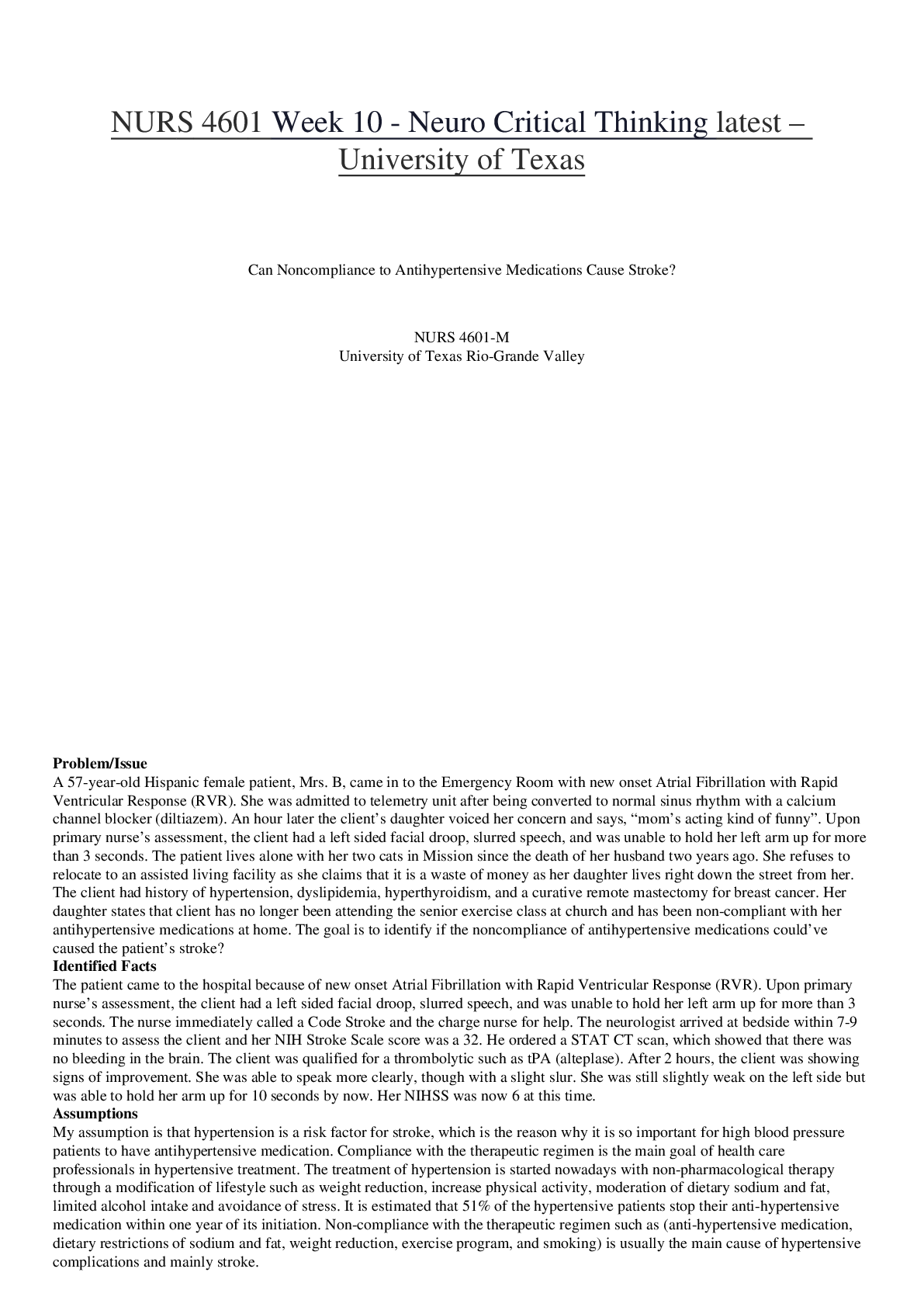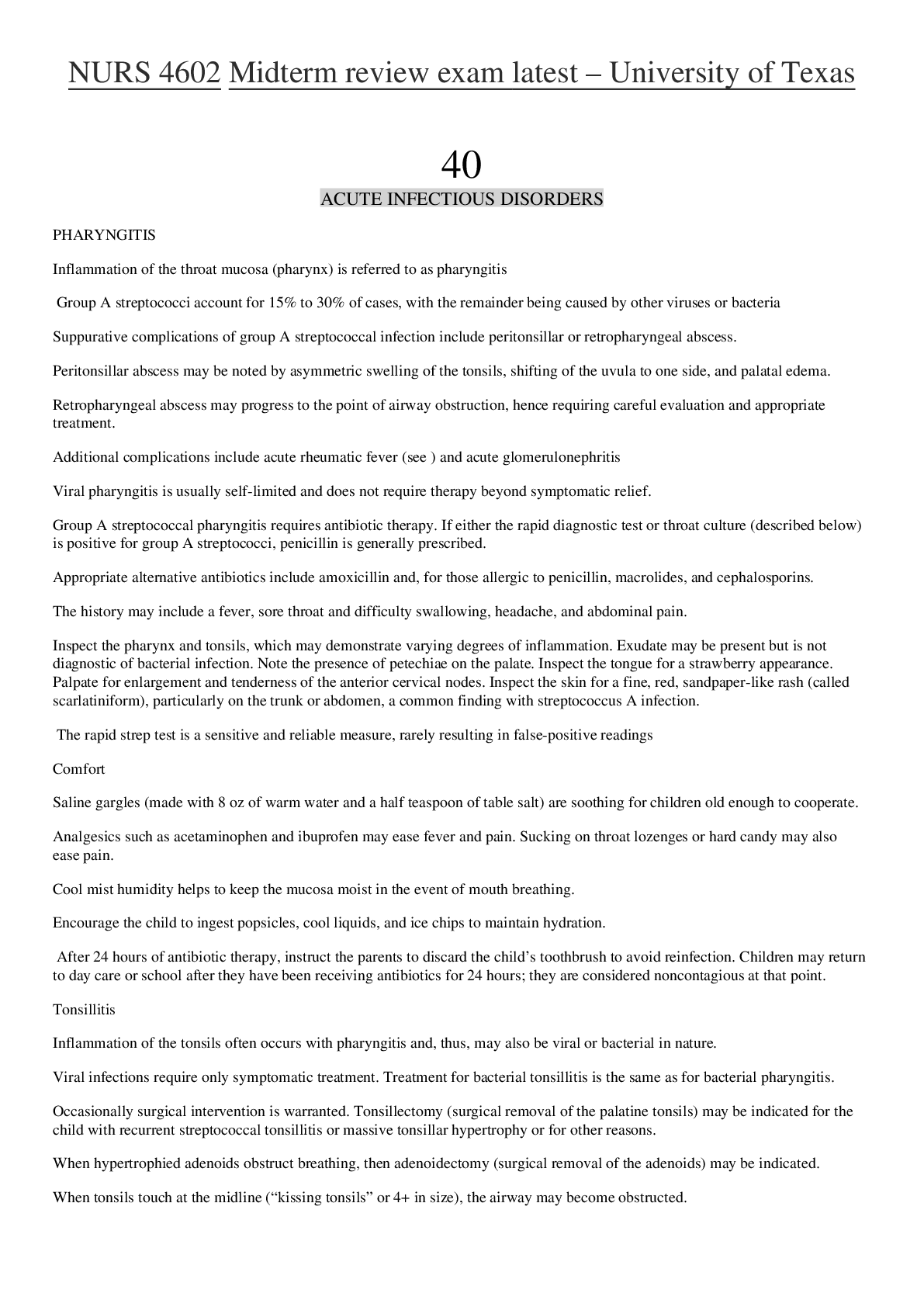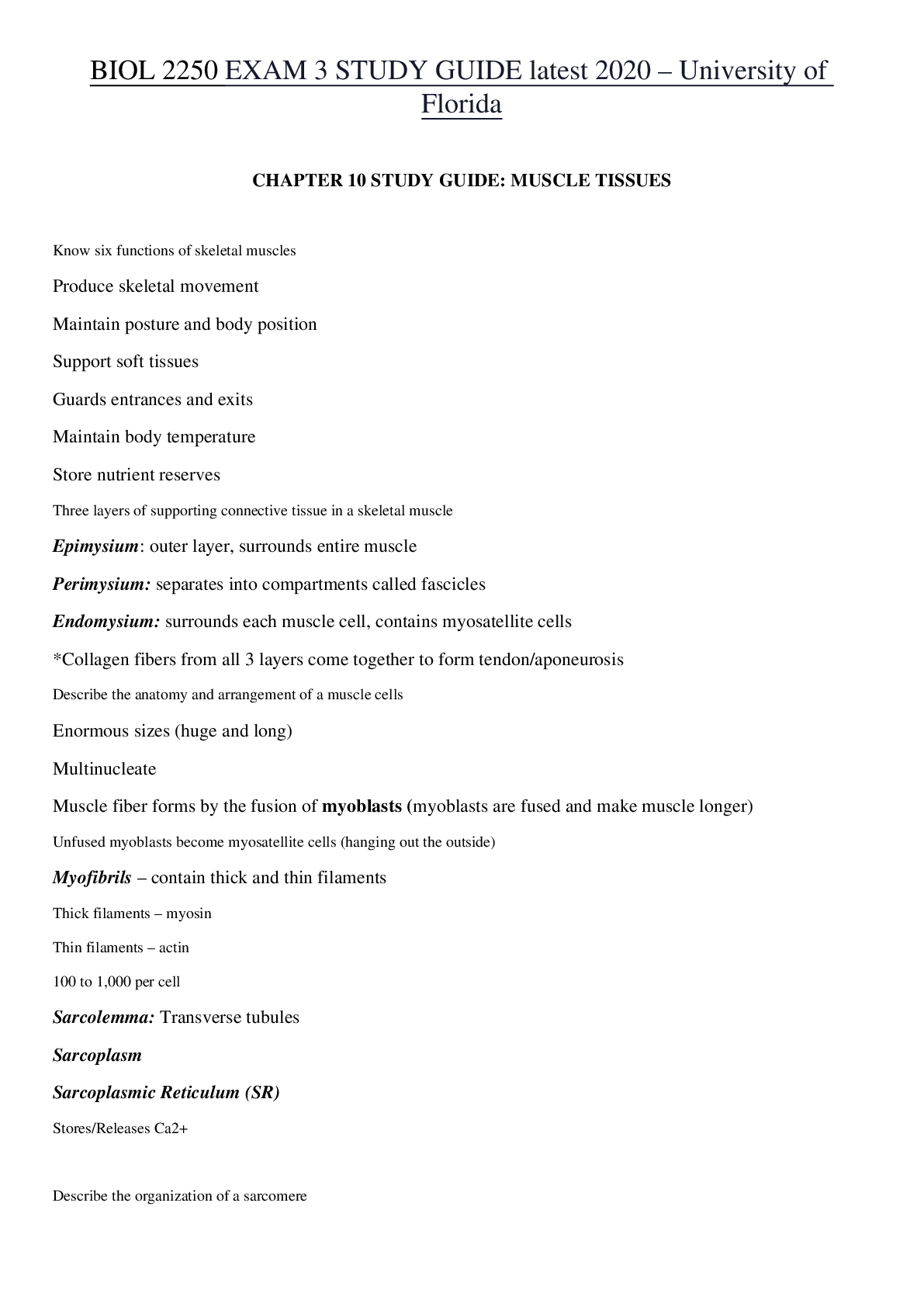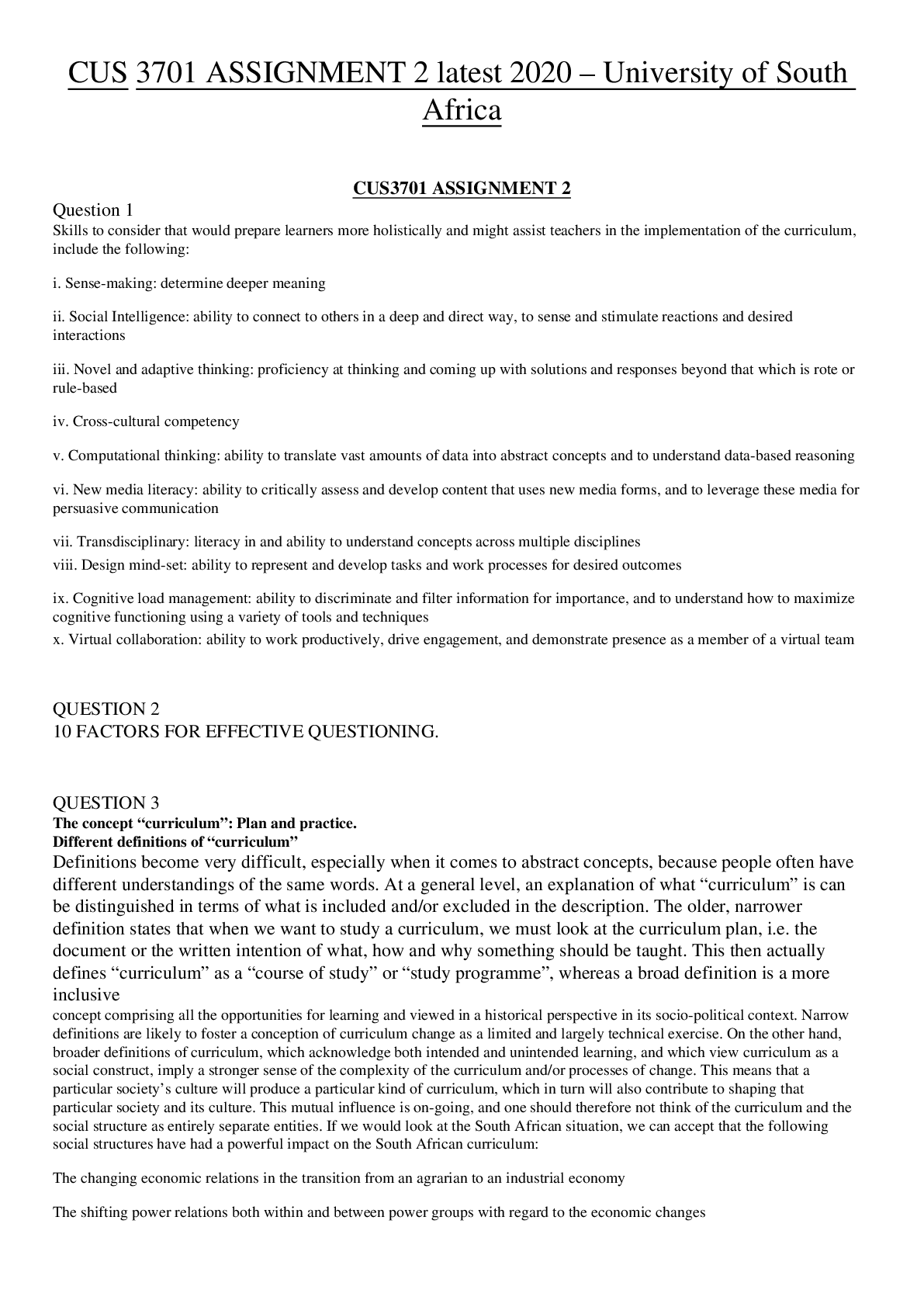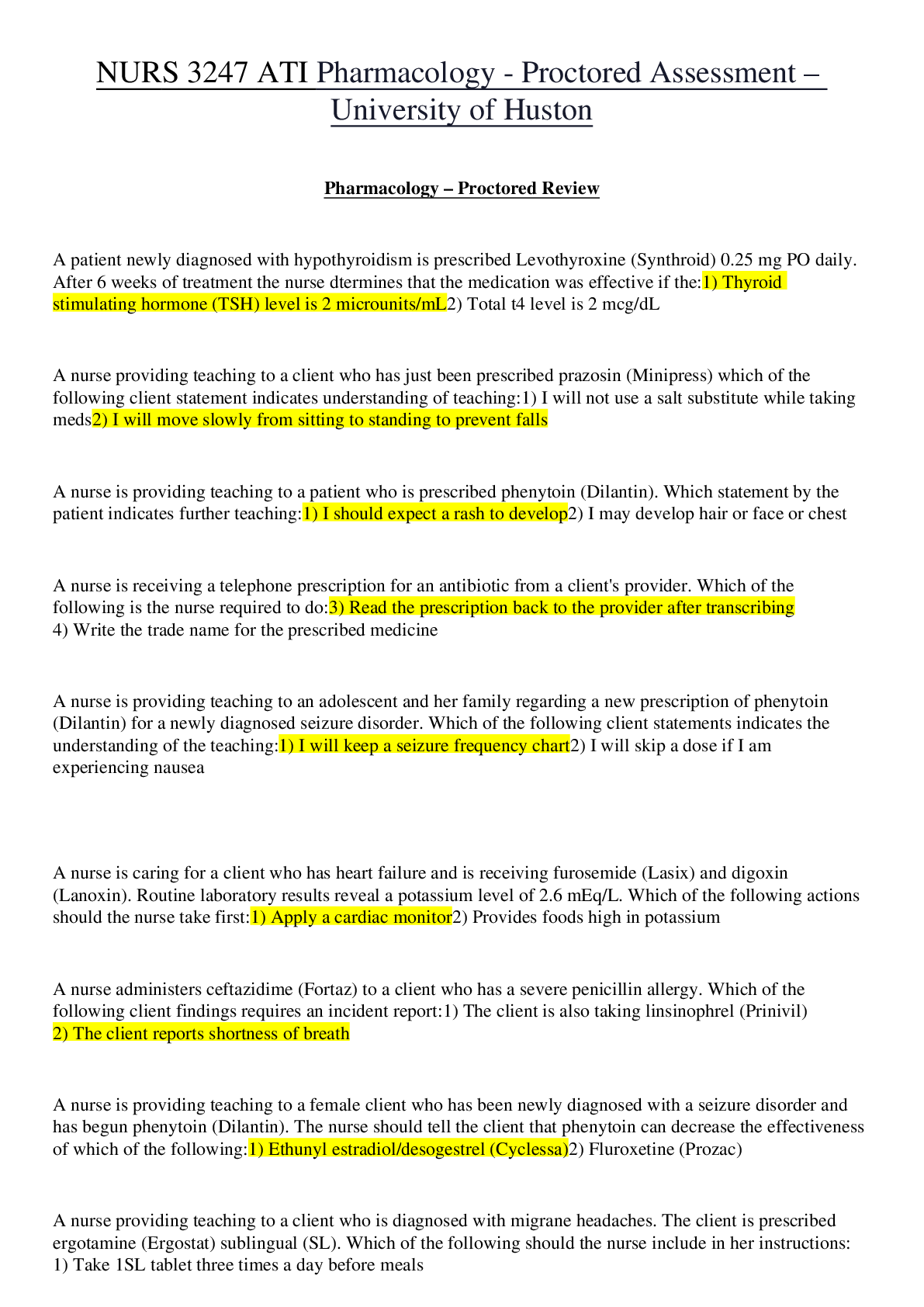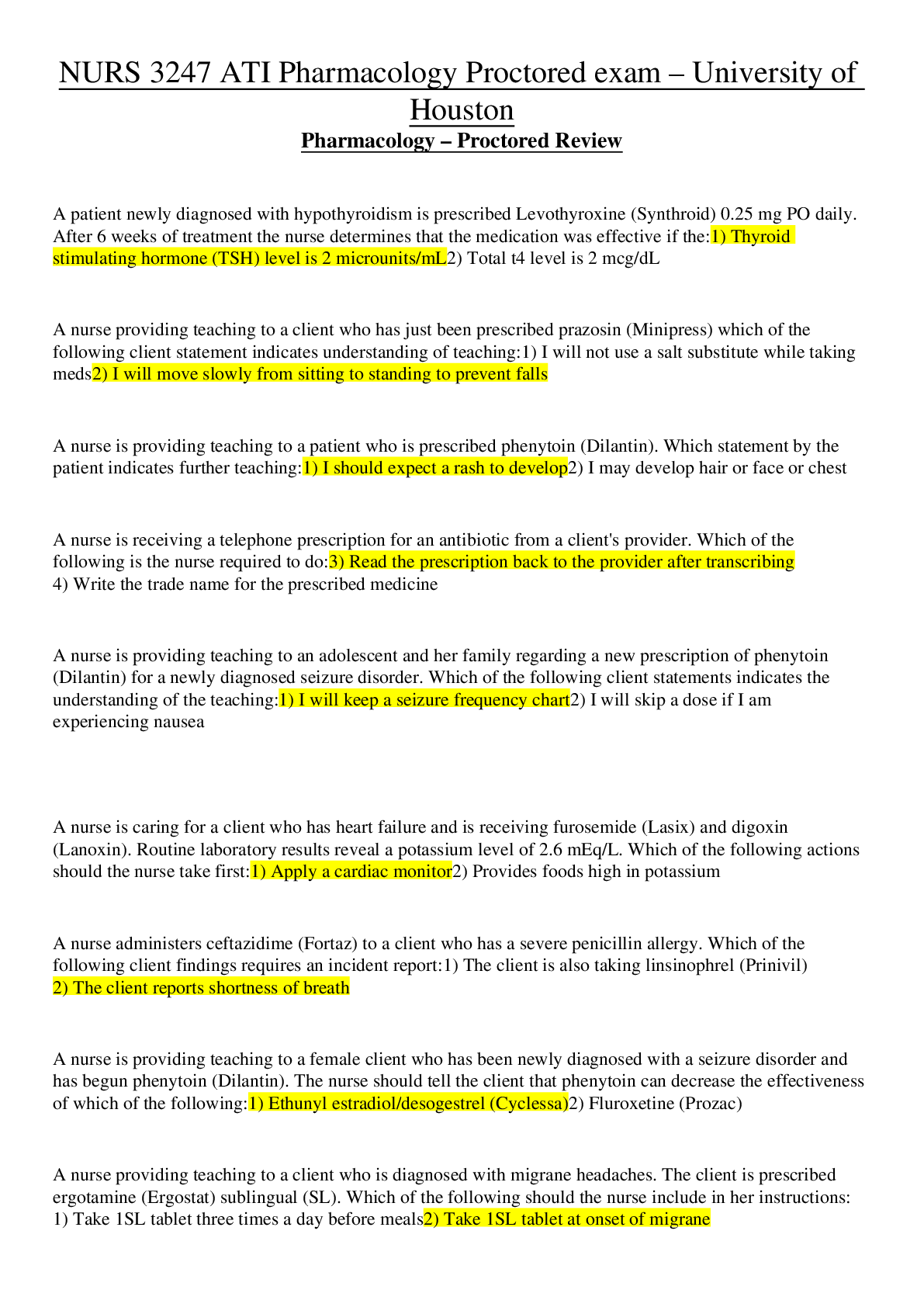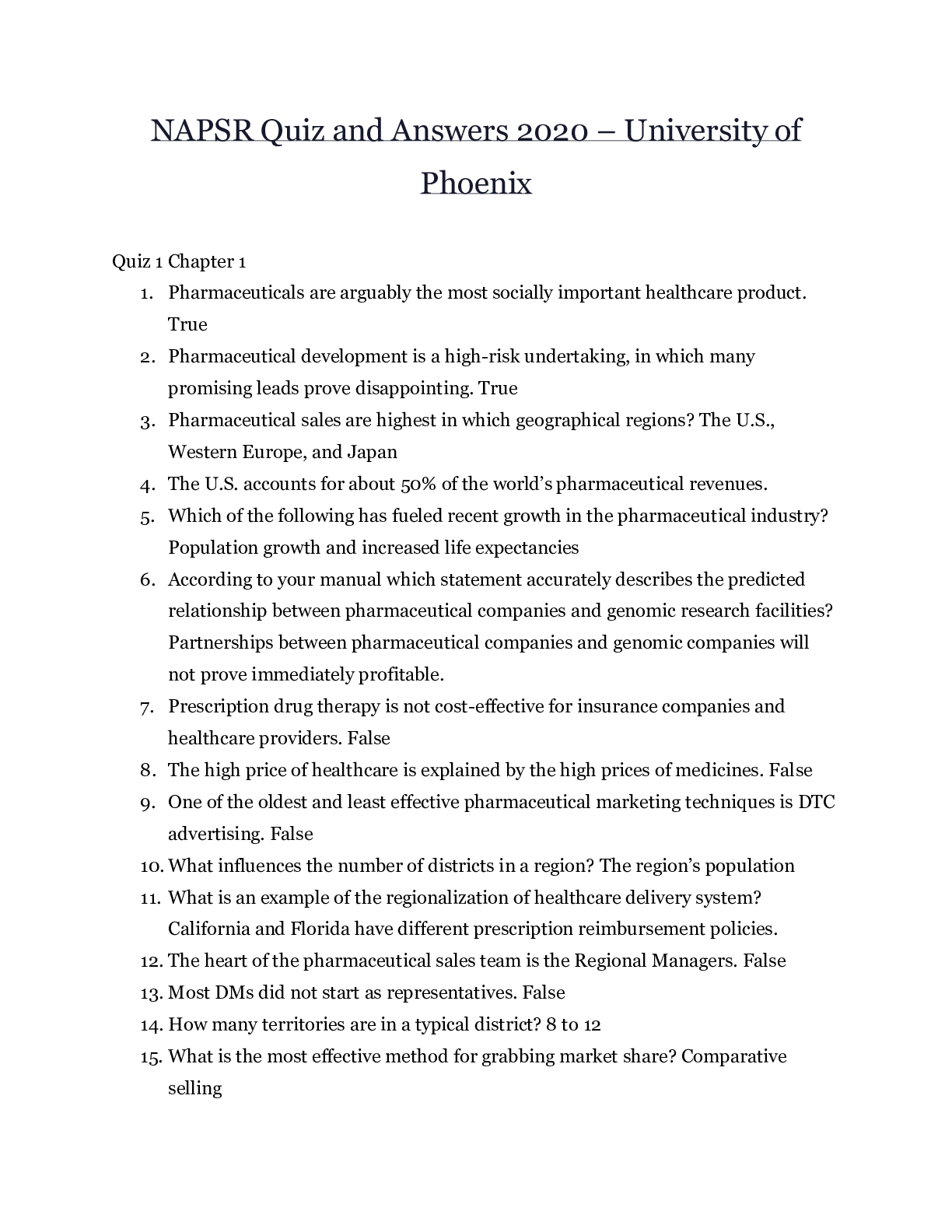*NURSING > EXAM > BIO 197 M3_L1_Gizmo_Simulation_Lab_ Photosynthesis_-_HONORS 2020 – University Of Nevada | M3_L1_Gi (All)
BIO 197 M3_L1_Gizmo_Simulation_Lab_ Photosynthesis_-_HONORS 2020 – University Of Nevada | M3_L1_Gizmo_Simulation_Lab_ Photosynthesis_-_HONORS 2020
Document Content and Description Below
BIO 197 M3_L1_Gizmo_Simulation_Lab_ Photosynthesis_-_HONORS 2020 – University Of Nevada Name: Thao Ho Date: 6/16 What did you eat for breakfast, lunch, and dinner yesterday? Imagine that ... your body made its own food, internally. Sound crazy? Plants do this all the time. Plants make their own food in a process called photosynthesis. In photosynthesis, plants use sunlight, carbon dioxide (CO2), and water (H2O) to make sugars, which provide them with the energy they need to live as well as the raw materials they need to grow. As a byproduct of photosynthesis, plants produce and release oxygen (O2). A. Photosynthesis and Light Intensity 1. In the Gizmo™, observe the aquatic plant. During photosynthesis, the plant produces oxygen, which is visible as bubbles leaving the plant. Set the Light intensity to 0%. (To quickly set a slider to a specific value, type the number in the field to the right of the slider and press Enter.) Check that the Temperature slider is set to 30.0°C and the CO2 level is set to 500ppm. Then select the BAR CHART tab. What is the rate of oxygen production? 0 What does this tell you about the rate of photosynthesis when no light is present? Explain your answer. The rate of photosynthesis must be extremely slow since the lack of light intensity is causing no oxygen output. 2. Slowly drag the Light intensity slider up to 40%. What happens to the rate of oxygen production as the light intensity increases? The rate of oxygen production increases. What does this tell you about the rate of photosynthesis as the light intensity increases? As the light intensity increases the rate of photosynthesis increases. Does increasing light intensity always have the same effect on oxygen production? In other words, experiment with the light slider to see if there are there certain light intensity changes that have no effect at all? Describe what you see. Up to around the values of fourties it is an increase of oxygen production but above that shows the oxygen stops increasing. 3. Select the TABLE tab. You will now use the table to record data on oxygen production at different intensities of light. 4. Set the Light intensity to 0%. Click on the Record Data button to record this information in the table. Increase the light intensity in increments of ten up to 100% and record data each time. Does your data agree with your findings in step 2c? Explain why or why not. My data does agree with my findings as it shows the oxygen levels stop growing on fourty. 5. To view a graph of your data, select the GRAPH tab. Be sure that Intensity is selected from the options below the graph. Click on the camera icon in the upper right corner to take a snapshot of the graph. - - - - - - - - - - - - - - - - - - - - - - -- -- - - - - - -- - - . Select the WHITE tab and the BAR CHART tab. Set the Temperature to 20.0°C, the Light intensity to 30%, and the CO2 level to 200 ppm. Click on the Show numerical values checkbox, and make a note of the oxygen production. a. Increase the Light intensity to 50%. Did this have any effect on the oxygen production? Why do you think this is? No it did not because I think there is a capping period of which the oxygen will no longer produce. b. Set the Light intensity back to 30%. Now, slowly increase the Temperature to 25.0°C. Did this have any effect on the oxygen production? This did not have any effect on the oxygen production. c. Set the Temperature back to 20.0°C. Now, increase the CO2 level to 300 ppm. Did this have any effect on the oxygen production? Why do you think this is? This did have an effect on oxygen production as the CO2 level did not reach the cap. d. Set the CO2 level back to 200 ppm. In this situation, what do you think was the limiting factor? Explain your reasoning. (Hint: If changing a particular factor increased the oxygen production, then that was the limiting factor.) The only factor that increased the oxygen was the CO2 2. Experiment with the Gizmo to find other examples of limiting factors. In what conditions is light intensity a limiting factor? When there is no light intensity when using wavelengths there is no oxygen production. In what conditions is temperature a limiting factor? In situations without color. 3. Suppose you were growing aquatic plants for sale. What are the ideal values for temperature, light intensity, CO2 level, and wavelength? Experiment with the Gizmo to answer this question. Temperature: 20 Light Intensity: 40 Carbon Dioxide: 250 Wavelength: 440 What was the oxygen flow rate based on your settings: 49.8 [Show More]
Last updated: 1 year ago
Preview 1 out of 14 pages

Buy this document to get the full access instantly
Instant Download Access after purchase
Add to cartInstant download
We Accept:

Reviews( 0 )
$13.00
Document information
Connected school, study & course
About the document
Uploaded On
Nov 12, 2020
Number of pages
14
Written in
Additional information
This document has been written for:
Uploaded
Nov 12, 2020
Downloads
0
Views
134















